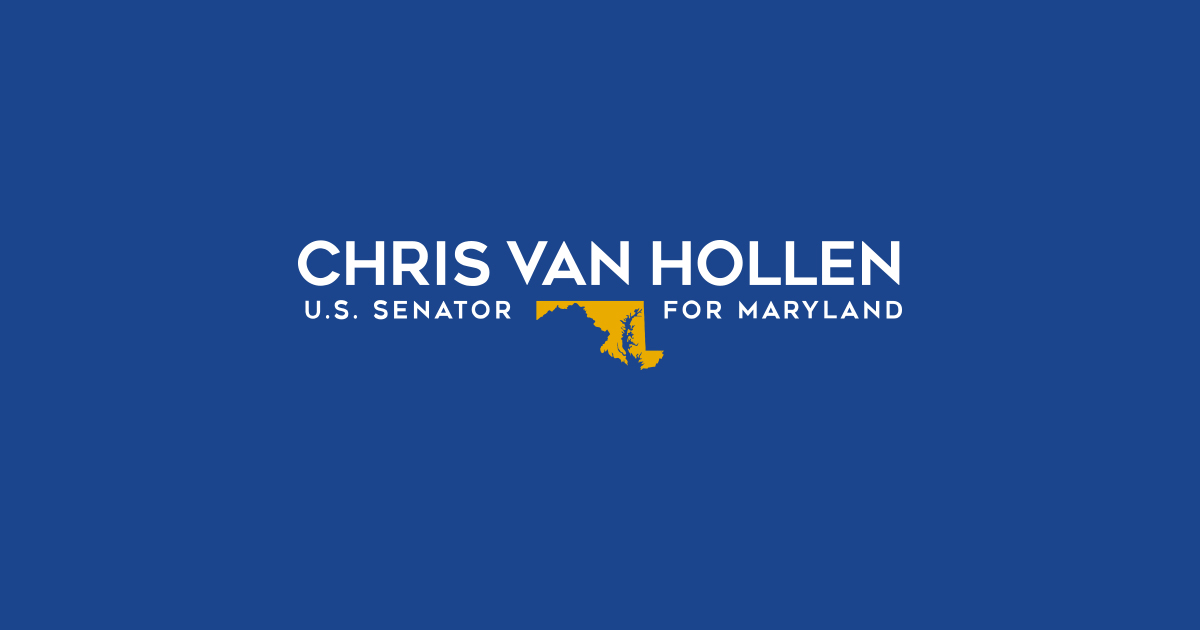Source: United States Senator for Maryland Chris Van Hollen
U.S. Senator Chris Van Hollen (D-Md.) joined Senators Cory Booker (D-N.J.) and Tim Scott (R-S.C.) and U.S. Representatives Ron Kind (D-Wis.) and Mike Kelly (R-Pa.) in introducing a bipartisan, bicameral bill reforming Opportunity Zones, the tax incentive for individuals who reinvest unrealized capital gains into high-impact projects in underserved communities. This legislation would improve and strengthen the Opportunity Zone program in several ways by making important fixes to the original law, benefitting Opportunity Zones throughout Maryland and ensuring the investments reach the communities and residents most in need of support. The bill will also update eligibility to incorporate brownfield industrial sites, such as Sparrows Point in Baltimore.
“Gaps in Opportunity Zone programs have barred economically distressed areas from accessing the critical resources they need to create new local opportunities. This legislation will help close those gaps and ensure that Opportunity Zone investments lift up low-income communities – spurring further investments and ultimately benefiting Marylanders,” said Senator Van Hollen. “Maryland’s own Sparrows Point and Turner Station, alongside hundreds of recovering regions across the country, stand to see renewed economic vitality and more good-paying jobs as a result of this solution.”
“The Opportunity Zone incentive has the potential to unleash much-needed economic growth in high poverty communities across the country – communities that investors too often overlook. But without robust guardrails in place, the incentive could be undermined or abused by those who aren’t committed to uplifting rural and urban communities across the country,” said Senator Booker. “I am proud to introduce this legislation with Senator Scott to help restore the original promise of opportunity zones by steering private capital to reinvest in underserved communities that have been historically left behind and working to level the economic playing field.”
“The Opportunity Zone program represents the good that leaders can do for communities across the country when we work together toward common sense solutions,” said Senator Scott. “Independent reporting shows that investments in Opportunity Zones are making a huge impact across the country, with billions of dollars flowing into impoverished neighborhoods. I am glad to build on that success with this legislation to make the program stronger, so that we can ensure this incentive is benefitting the Americans who need it most.”
Additionally, U.S. Senators Mark Warner (D-Va.) and Todd Young (R-Ind.) and Representatives Terri Sewell (D-Ala.-07), Dan Kildee (D-Mich.-05), and Jackie Walorski (R-Ind.-02) co-sponsored the legislation, called the Opportunity Zones Transparency, Extension, and Improvement Act.
This bipartisan legislation would improve Opportunity Zones by:
- Granting eligibility for brownfield industrial sites. These areas offer promising revitalization opportunities, and border existing Opportunity Zones, but were ineligible to be designated as Opportunity Zones under the initial law because they did not have population. Zero-population brownfield industrial sites, such as the Sparrows Point site in Maryland that borders the Turner Station Opportunity Zone, would now be eligible to be Opportunity Zones.
- Reinstating and expanding the reporting requirements that were present in the Investing in Opportunity Act (IIOA), the original stand-alone legislation that created Opportunity Zones, but were stripped out in the 2017 Tax Cuts and Jobs Act due to procedural rules.
- Ending Opportunity Zones that are not impoverished. While the vast majority of Opportunity Zones are truly impoverished areas, the legislation would sunset a small percentage of Opportunity Zone designations for tracts with a median family income at or above 130 percent of the national median family income. States would be able to designate a new tract in high-need communities for every tract sunsetted under this provision.
- Creating pathways for smaller-dollar impact investments by allowing Qualified Opportunity Funds (QOFs) to be organized as a “fund of funds” that may invest in other QOFs, providing smaller communities and projects with the financing they need.
- Providing operating support and technical assistance to high-poverty and underserved communities through a State and Community Dynamism Fund. Flexible grants will help states drive private and public capital to underserved businesses and communities.
- Extending the tax incentive for two years in order to facilitate continued investment. It took the Treasury Department nearly two years to issue final regulations governing Opportunity Zones, during which time many investors and stakeholders stayed on the sidelines awaiting clear rules for the policy. Extending the policy by an equal amount of time will help investors and communities fully use the tool as Congress intended — which is especially important now with the economy in recovery from the impacts of the COVID-19 pandemic.
The full text of the legislation can be viewed here.
The one-pager of the legislation can be viewed here.
The section by section of the legislation can be viewed here.
